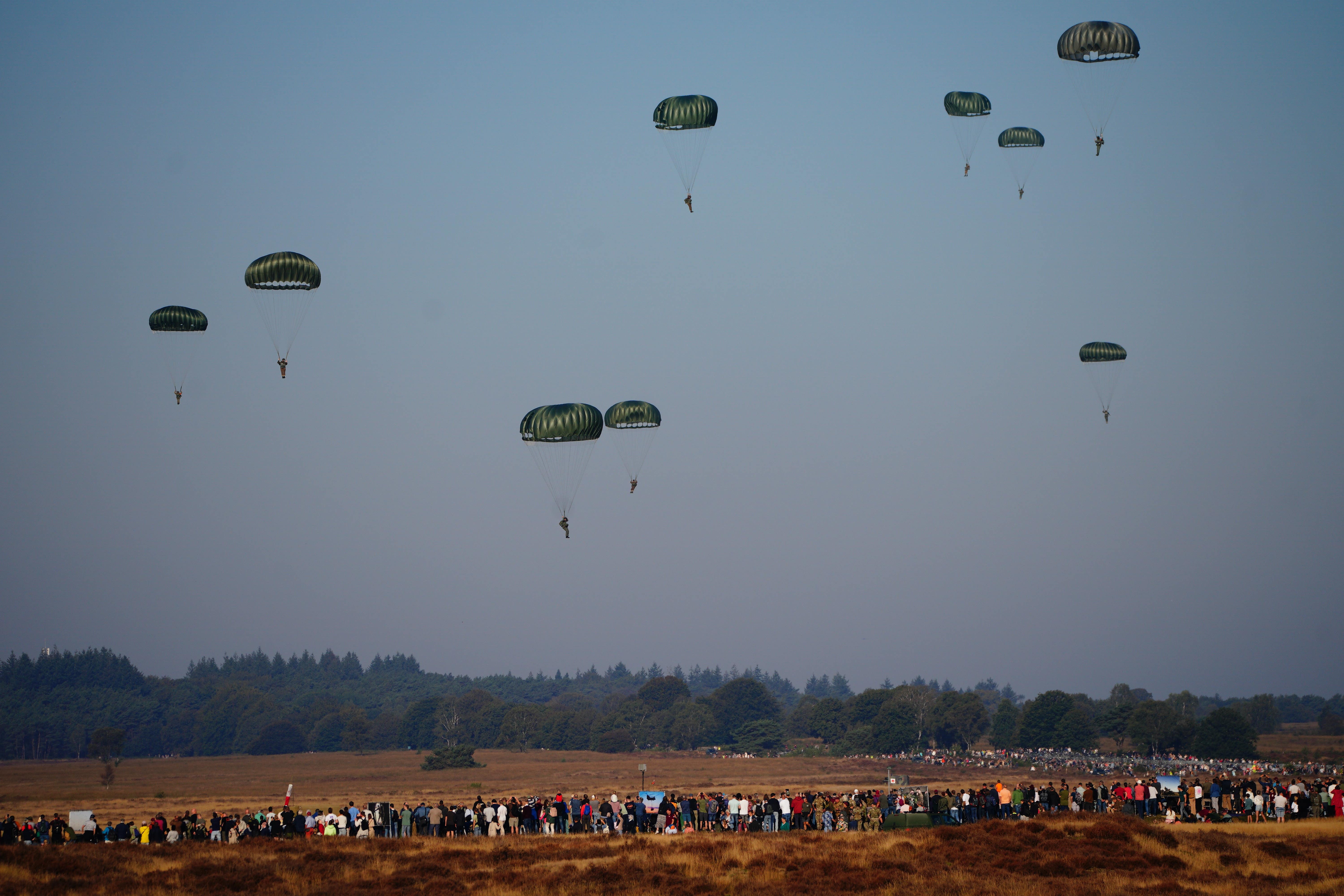Paratroopers mark 80 years since the Battle of Arnhem
Paratroopers from eight NATO member countries parachuted near the Dutch town of Ede, on Saturday.

Eighty years after thousands of Allied airborne troops parachuted into the Nazi-occupied Netherlands in a daring military offensive their modern counterparts have made the same jump.
Paratroopers from eight Nato member countries, including the UK, USA, Portugal and Spain, parachuted from 12 aircraft into Ginkel Heath, a nature reserve near the Dutch town of Ede, on Saturday.
Some 700 paratroopers took part in the jump, including the Red Devils, the British Army’s freefall parachute display team.
The event commemorates the anniversary of the Battle of Arnhem, part of Operation Market Garden, a manoeuvre intended to create a route for the Allied forces into northern Germany in September 1944.
Among those to parachute into the occupied Netherlands were 1,900 allied airborne soldiers from Britain’s 4th Parachute Brigade.
The plan involved seizing key bridges with a combination of airborne forces – known as Market – with land forces joining them – Garden.
But the airborne forces’ landing zones were around nine miles from the bridge at Arnhem, losing them the element of surprise and giving the Nazi troops time to build blockades.
While the operation succeeded in capturing the Dutch cities of Eindhoven and Nijmegen, it failed in its key objective – securing the bridge over the Rhine at Arnhem.
A defensive battle was fought, which saw nine days of prolonged street fighting, until the order to withdraw was given on September 25.
More than 8,000 British soldiers were killed, missing or captured in the offensive.
Defence Secretary John Healey said: “Today we honour the veterans of Arnhem, and we honour those who fought and died to help liberate our allies.
“Eighty years on, we remember the huge price paid for our freedom and commit to defending peace and security today.
“I’m proud that members of our Armed Forces are at the heart of the commemorations in the Netherlands this week.”
A memorial service at Arnhem Oosterbeek War Cemetery will be held on Sunday and attended by the Princess Royal – who will represent the King – Second World War veterans and senior UK defence officials.
Bookmark popover
Removed from bookmarks